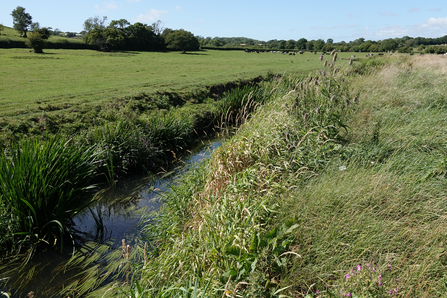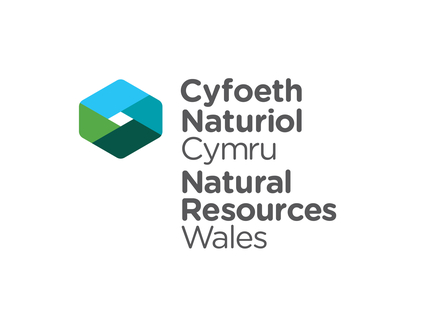© Rob Parry/INCC
Water voles return to the Thaw for the first time in 20 years
The Wildlife Trust of South and West Wales (WTSWW), South East Wales Rivers Trust (SEWRT), Initiative for Nature Conservation Cymru (INCC), Natural Resources Wales (NRW), and Vale of Glamorgan Council’s Restore the Thaw project have released over 200 captive bred Water voles along the River Thaw, in the Vale of Glamorgan, to save this critically endangered species from extinction.
Water voles used to be common across waterways in Wales but are now a rare sight across the country. They have declined 90% in the past 30 years due to habitat loss, pollution and predation from non-native American mink.
This reintroduction follows years of planning and work to improve the habitat and reduce the number of mink on site.
Rhodri Irranca-Davies, Nature Recovery Manager at WTSWW, said: “After two years of work, it is wonderful to finally see these Water voles in their natural habitat. This release marks a significant step in the recovery of Water voles in the Vale of Glamorgan and wider work to boost biodiversity in Wales.”

© Rob Parry/INCC
Rob Parry, Chief Executive Officer at INCC, said: “We assessed multiple locations for the project, and we identified some excellent habitat along the River Thaw. It’s got plenty of ponds, slow moving waterways and boggy areas. Water voles need soft banks for their burrows and an abundance and variety of vegetation to eat. The Thaw has all this which means they should thrive.”
Working with landowners, SEWRT worked to improve the release site to enhance the habitat for Water voles.
Alyssia Thomas, SEWRT Project Officer, said “We have been working with multiple landowners to improve riparian habitats with the Vale of Glamorgan. Their passion for Welsh wildlife has been crucial to the work we do.”
Due to the low number Water voles in the wider area, it is unlikely they would have been able to naturally recolonise the river, meaning a reintroduction of captive bred individuals was essential for Water vole recovery.
The voles were bred at NRW’s hatchery in Cynrig and a facility in Devon, ready for release onto the Thaw.
The Water voles arrived on the release site on in August, where they spent a few days acclimatising to their new environment in temporary pens, before being released. The hope is that these voles will go onto breed successfully and repopulate the River Thaw catchment.
© Rob Parry/INCC
As ecosystem engineers, Water voles form an important part of the river ecosystem. Their burrowing brings nutrients to the surface helping to improve plant diversity on the riverbanks, in turn benefitting a host of other species. They also form an important part of the food chain, supporting predators like otters, herons and birds of prey.
Restore the Thaw and supporting partners delivered training sessions as part of the project to provide local people with the skills to be able to recognise and record signs of Water vole activity. These volunteers will form a community led monitoring project to track Water vole activity following the release.
Melanie Stewart, Restore the Thaw Project Manager, said: “Community engagement is an important part the project. Most people in the Vale will have never seen a water vole. We hope that, with the training we have provided, the local community will be able to spot the signs of Water voles, following their release, and help us track the progress of the reintroduction.”

The scheme is funded by the Welsh Government Nature and Climate Emergency (NaCE) Capital Programme. The programme supports a number of environmental priorities including peatland restoration, metal mine remediation, fisheries, water quality and national forests.
